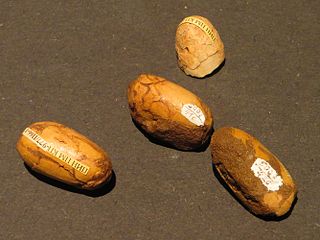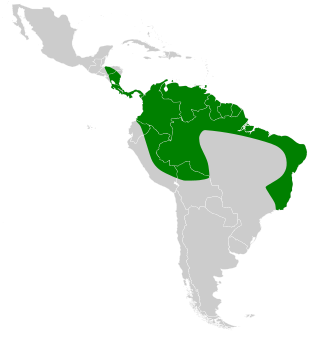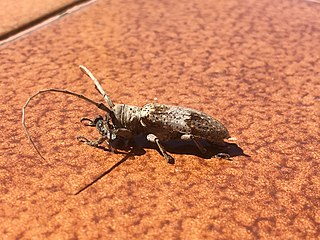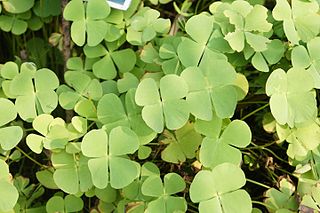
Minute is a unit of time defined as equal to 60 seconds. One hour contains 60 minutes. Although not a unit in the International System of Units (SI), the minute is accepted for use in the SI. The SI symbol for minutes is min. The prime symbol ′ is also sometimes used informally to denote minutes. In the UTC time standard, a minute on rare occasions has 61 seconds, a consequence of leap seconds; there is also a provision to insert a negative leap second, which would result in a 59-second minute, but this has never happened in more than 40 years under this system.

The little stint is a very small wader. It breeds in arctic Europe and Asia, and is a long-distance migrant, wintering south to Africa and south Asia. It occasionally is a vagrant to North America and to Australia. The genus name is from Ancient Greek kalidris or skalidris, a term used by Aristotle for some grey-coloured waterside birds. The specific minuta is Latin for "small.

Tagetes is a genus of 50 species of annual or perennial, mostly herbaceous plants in the family Asteraceae. They are among several groups of plants known in English as marigolds. The genus Tagetes was described by Carl Linnaeus in 1753.

Gobipteryx is a genus of prehistoric bird from the Campanian Age of the Late Cretaceous Period. It is not known to have any direct descendants. Like the rest of the enantiornithes clade, Gobipteryx is thought to have gone extinct near the end of the Cretaceous.

The white-bellied big-eared bat is a bat species from South and Central America, as well as Trinidad and Tobago in the Caribbean.

Oncideres cingulata, the twig girdler, is a brownish-gray beetle, typically 1⁄2 to 5⁄8 inch in length, in the longhorn beetle family. It is characterized by long antennae, 1⁄2 to 1 inch long.

Onciderini is a tribe of longhorn beetles of the subfamily Lamiinae, they are prevalent across Europe in nations such as Turkey, and Finland.

Oncideres is a genus of longhorn beetles of the subfamily Lamiinae, containing more than 120 species in the nearctic and neotropics.
Oncideres hoffmanni is a species of beetle in the family Cerambycidae. It was described by Galileo and Martins in 2008. It is known from Brazil.
Oncideres miniata is a species of beetle in the family Cerambycidae. It was described by James Thomson in 1868. It is known from Paraguay, Argentina and Brazil.

Oncideres putator is a species of beetle in the family Cerambycidae. It was described by James Thomson in 1868.

Oncideres albomarginata is a species of beetle in the family Cerambycidae. It was described by James Thomson in 1868. It is known from Costa Rica, Ecuador, Colombia, Guatemala, Panama, Guyana, Mexico, Nicaragua, Venezuela, and Trinidad and Tobago.
Oncideres chevrolatii is a species of beetle in the family Cerambycidae. It was described by James Thomson in 1868. It is known from Brazil.
Oncideres ocellaris is a species of beetle in the family Cerambycidae. It was described by Henry Walter Bates in 1885. It is known from Nicaragua and Mexico.
Oncideres scitula is a species of beetle in the family Cerambycidae. It was described by Henry Walter Bates in 1880. It is known from Mexico.

Oncideres captiosa is a species of beetle in the family Cerambycidae. It was described by Martins in 1981. It is known from Paraguay and Brazil.
Oncideres amputator is a species of beetle in the family Cerambycidae. It was described by Johan Christian Fabricius in 1792, originally under the genus Lamia. It is known from the Caribbean Islands. It feeds on Eucalyptus and Inga ingoides.

Oncideres gutturator is a species of beetle in the family Cerambycidae. It was described by Johan Christian Fabricius in 1775. It is known from Ecuador, Brazil, Guyana, Suriname, Panama, and French Guiana.

Marsilea minuta, or dwarf waterclover is a species of aquatic fern in the family Marsileaceae. It is not to be confused with Marsilea minutaE.Fourn. 1880, which is a synonym for Marsilea vestita. Other common names include gelid waterklawer, small water clover, airy pepperwort, and pepperwort, though the lattermost also applies to plants in the genus Lepidium. In French it is called marsilea à quatre feuilles and petite marsilée, the latter appearing to be a calque with the Latin botanical name. In Chinese it is 南国田字草, literally "southern field word grass," referencing the similarity of the leaflet shape to the Chinese character for "field." The Koch Rajbongshi people and Garo people call it shusni shak. It is called 'শুশনি শাক' in Bengali. In parts of India it can be called sunisanakka In Indonesian it is semanggi, but this name also applies to Marsilea crenata. In Japanese it is nangokudenjiso and in Thai it is phakwaen. In Malaysian it is tapak itik. In the Philippines it is kaya-kayapuan.











